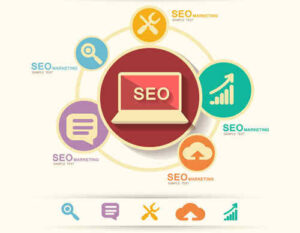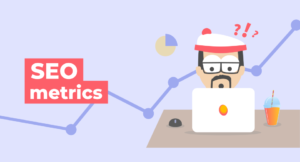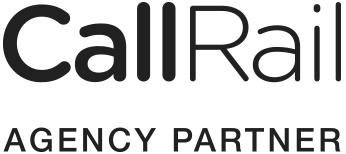One common misconception most people have about on-page SEO, also known as on-site SEO, is that it only requires pouring in a few keywords here and there, and VOILA!… Not exactly!
Well, that’s not to say that keyword placement is not important, but nowadays, search engines are smarter. It takes a lot more effort to get the on-page optimization results you need to generate organic traffic. This article will show you a detailed, step-by-step guide to on-page SEO basics to help you achieve the best optimization results for your website.
Why’s this article ranking on the first page? Well, it’s because we know what we’re talking about!

What Is On-Page SEO?
On-page SEO is the practice of improving the elements on the pages of your website to satisfy the users and search engines.
On-page SEO is the most important of the four SEO techniques, including technical SEO, off-page SEO, and Local SEO, that help a website become more visible online, attract qualified leads, achieve trust and loyalty, and improve long-term customer engagement.
Why Should You Do On-page SEO (Search Engine Optimization)?
As far as online visibility goes, you need to optimize for search engines while also creating valuable content for your readers. According to research, an SEO-generated lead is eight times (8x) more likely to convert into a paying customer than a lead generated via ads.
Top search engines like Google use advanced algorithms like Natural Language Processing (NLP) while crawling web pages in search of the most relevant content and other relevant on-page optimization meta tags and keywords.
So what makes on-page SEO important for your online success?
- Increased Organic Traffic
- Improved User Experience
- Targeted Keyword Optimization.
- Enhanced Content Relevance.
- Better Search Engine Indexing
- Competitive Advantage
- Adaptability to Algorithm Changes
If your web page is not on-page optimized, Google’s bots will assume that you haven’t provided enough helpful content for the reader and pass over your site. You don’t want that!
On-page SEO is relatively inexpensive, considering how much traffic it drives. So, why not go all in? Read on to find out how to improve your website’s online visibility and boost organic traffic.
The Complete On-page SEO Guide — What You Need To Do
As you probably already know, achieving the best optimization result is key to higher search engine rankings and, consequently, quality traffic. Note that on-page SEO is only one of the four major SEO techniques that you need to implement, and you may need to work with an SEO specialist in the long run. Here are some reliable on-page SEO best practices you should follow:
1. Intensive keyword research
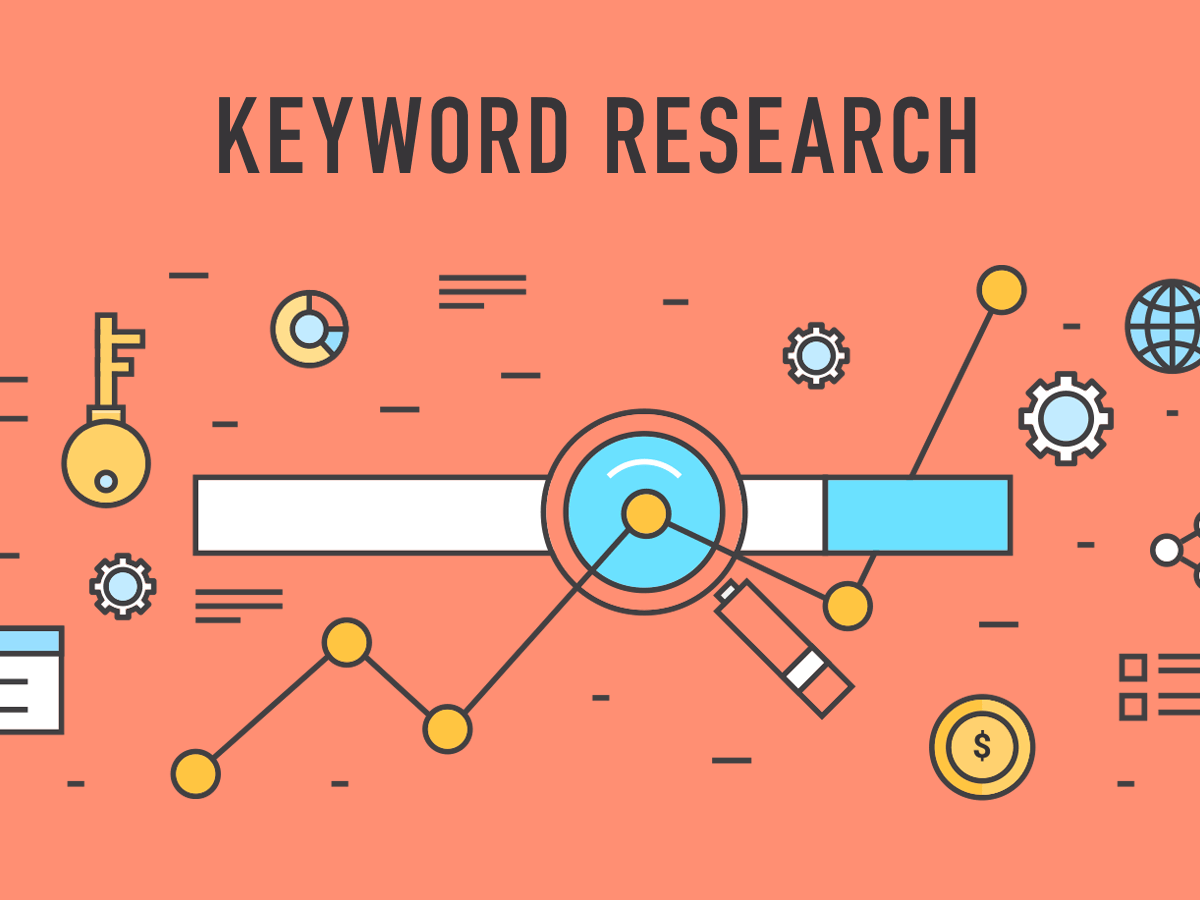
Keyword research is the most important part of on-page SEO. As a matter of fact, one crucial ranking factor on search engine results pages (SERPs) is choosing the right target keywords to optimize your page with.
When Google’s crawlers attend to a search query, the first and most important element in the query is the keyword. If your web page ignores the keyword, you’re definitely going to miss out on the traffic.
So, how do you do research keywords?
Conducting intensive keyword research is simple but not easy. That has to be said before anything else. However, once you get that milestone sorted, it will form the foundation on which the rest of your on-page optimization efforts will be built. Here’s a step-by-step checklist to follow:
- Understand your audience: Before creating any content piece, first study your audience. What kind of content do they like to read? What stage of the buyer’s journey are they in? What words or topics resonate with them the most? Once you answer these questions, you’ll be on the right path.
- Brainstorm some ideas: What are some terms or topics your industry is known for? What are some intricate parts of your business you think your audience might need help with? As a digital marketing company, “understanding on-page SEO” is one such topic. Remember to write down as many ideas as possible. No idea is irrelevant. Write it down.
- Search your brainstormed ideas on Google: Once you have written down as many related business/industry terms as possible, search them individually on Google for more inspiration. Check the “People Also Ask” and “Related Searches” sections for more ideas on what your visitors may be searching for.
- Study your competitors: Every business has competitors, and those competitors create content online. What are they doing that you can also implement? Which topics are they covering? How do they write and format their content? What content gaps can you fill? You can get a lot of ideas by analyzing your competitor’s website.
- Use keyword research tools (SEO tools): You want to hold off on this step until you have completed the steps mentioned above. Use tools like AHrefs, SEMrush, Google search console, Google Trends, Keywords Explorer, and many more. These tools give you an insight into the keyword difficulty, traffic potential, competition levels, search volume, and more.
- Target long-tail keywords and gradually go harder: Targeting long-tail keywords may not bring you the millions of impressions you want, but it will help set up your website for SEO success. They have higher intent and lower competition, helping you drive targeted traffic and qualified leads.
Remember, researching keywords is an ongoing task. As your website gets older, you must ci=ontinually find relevant keywords to target to optimize your website better.
2. Satisfy The Search Intent
Every keyword satisfies a particular intent. Not everyone is on Google searching for how to do stuff. Many searchers are also looking for where to buy, what to buy, and who to buy from. This is what is called the search intent (the intention behind the search).
The four major types of search intent for which your audience make queries include
- Informational intent refers to searches where users are seeking specific information or answers to their questions. These searches typically start with words like “how to,” “what is,” “why,” or “tips for.” Users with informational intent are looking for knowledge, research, or educational content.
- Commercial investigation occurs when users are researching or comparing products/services before making a purchasing decision. They are in the consideration phase and are looking for reviews, comparisons, or recommendations. Users with commercial investigative intent use keywords like “best,” “top-rated,” or “vs.” in their queries.
- Navigational intent involves searches where users are looking for a specific website, brand, or online destination. Users already have a specific website or platform in mind and are using search engines as a navigation tool to reach their desired destination. They may type queries like “Facebook,” “Pinterest,” or “Milia Marketing” just to avoid typing in the entire URL.
- Transactional intent refers to searches where users are ready to make a purchase or engage in a specific transaction. These searches often include keywords like “where to buy,” “discount,” “deal,” “for sale,” or “price.” Users with transactional intent are looking for products, services, or solutions and are more likely to convert into customers.
Creating content that matches the search intent is important because Google uses this as a metric to rank websites. Plus, what’s the essence of writing a product review when the keyword says, “How to use A B product”?
Ignoring search intent is listed in our article on the 7 Common SEO Mistakes to Avoid
3. Write Quality Content
Your page content is one of the most important on-page SEO factors, as it can help Google determine if you have the “Experience,” “Expertise,” “Authority,” and “Trustworthiness” (E-E-A-T) required to discuss the topic. The quality of your content can also help you achieve E-E-A-T as you go.
How do you ensure the content you have written is high-quality?
- Keep it simple: Website users don’t care about your vocabulary depth or your stylish use of words. They just want to read about “How to sleep better at night.” Don’t make them lose more sleep trying to understand what you mean by “Hullaballoo.” If you want to rank, make it easy, clear, and concise.
- Create compelling headlines: Craft attention-grabbing headlines that clearly convey the value or benefit of reading your content. Use power words, numbers, and emotional triggers to capture readers’ attention. We will discuss the proper use of headings a little later in the article.
- Write for one reader (buyer persona): Before you write any piece of content, create a buyer persona, somebody you think the content is most suitable for. Write the entire content like you’re speaking only to that person. It will shape the viewpoint of the content and help the reader feel more connected to the article.
- Add a UX-optimized structure: Readers can get bored very easily. You don’t want them to zone out while reading your content. Break up your content into parts using headers, subheaders, images, videos, and short paragraphs.
- Focus on providing value: At the end of the day, all your users want is solutions to their problems. Focus on creating content that solves their problem completely. Provide valuable insights, information, tips, and a unique perspective on the topic.
- Write for the reader, not for the search engines: According to Google’s latest update on helpful content, websites that obviously write just to rank will have a hard time ranking. Google wants to favor experts who have the reader in mind while writing content. They want the reader to leave your site feeling satisfied with the result they found, and so should you.
- Write for “skimmers”: Many of your website visitors won’t read your content word-for-word. They will scan through it for important information. Make it easy for them by using bullet points, lists, and bold elements to highlight important insights and information.
- Write unique and grammatically correct content: Plagiarism can hurt your website in a way you can’t imagine. Ensure to check that your content is completely unique and grammatically correct. Use tools like Copyscape for plagiarism and Grammarly (obviously) for grammar.
4. Heading Tag Hierarchy
Heading tag hierarchy provides the structure for your content. They help the reader stay interested in the content and expectant of what’s to come. Heading tags also help Google’s crawlers understand the structure of your content.
Heading Tag Hierarchy:
- H1: This is the highest-level heading tag and should be used for the main title of your page. Every page should have only one H1 tag.
- H2: These tags are used for subheadings that provide a clear division within the content. You can use them multiple times within a page to discuss subtopics.
- H3, H4, H5, H6: These tags are used for further subheadings (sub-subheadings) or subsections, providing a hierarchical structure within the content. Use them as needed.
Some valuable practices for using heading tag hierarchy:
- Be consistent. If you start with H2s as subheadings, use them throughout the content.
- Use a logical order. Don’t use H3s as subheadings directly after an H1. H3s should come after H2s if required.
- Use a semantic structure. Use your heading tags to lead the reader through a logical flow of information. You don’t want to discuss the benefits of a topic before defining it.
- Incorporate relevant keywords: Your headings should convert variations of your content keywords.
- Prioritize user experience: Your headings should focus on guiding the reader through your content.
These best practices will help you improve the readability, structure, and SEO value of your website.
5. Adding Visuals (Images, Infographics, And Videos) With Alt Text
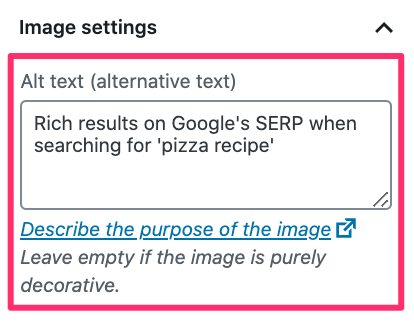
Adding visuals to your content not only helps improve the structure of your written content but also helps keep readers glued to your article. According to a study by Wyzowl, 84 percent of marketers attested to noticing a boost in leads after adding videos to their content. 83 percent also confirmed that website visitors spent more time on their web pages that included a video.
It’s also recommended to add videos, especially if the targeted keywords rank as a snippet from a YouTube video. What this implies is that your audience requires more visual content, which your content has to satisfy before it ranks.
Ensure that the images you add to your content are relevant and engaging. Your images should show your readers what your content is talking about. They should show proof, examples, and more. Add them to all the web pages.
Add alt texts: One of the reasons using alt text for on-page SEO is important is because it helps you cater to the visually impaired. This promotes the idea of inclusivity.
Image alt texts also help you rank in Google image search for the keywords you’re targeting, which is why your image alt texts should include variations of your keyword.
4. Adding Meta Tags
The first contact a user makes with your website when they search for a topic on Google is your meta tag. You should make a striking first impression.
Meta tags show the users what to expect when they click on the page and also show Google what your page is about. You must improve your meta tags if you must rank in Google. Appropriately using meta tags for on-page SEO can help you.
- Improve search engine visibility.
- Improve click-through rate
- Optimize for keywords.
- Create a more accessible and usable website for people with disabilities
- Become more competitive on SERPs
- Increase social media shares
There are several meta tags, including meta title (title tag), meta description, author tags, meta robots tags, canonical tags, open graph tags, viewport tags, and more.
However, we will focus on three of the most important and relevant ones. They’re also the easiest to implement.
A. Meta Title/Title tag
Meta title (otherwise known as a title tag) simply refers to the captioned texts displayed on result pages that suggest the topic of a webpage. This text should be around 50 to 60 characters long and should be unique, compelling (but not clickbaity), relevant, and contain keywords.

B. Meta Description
This refers to the text just below the meta title that further describes the content on the page. Meta descriptions should be around 150 to 160 characters long and must convey a summary of the content on the page. They should be unique, compelling, relevant, contain keywords, and include a CTA.

C. Author Tag
The author tag describes the author of the article and shows Google that an experienced expert on the topic writes the content on the website. Your author tag should contain a headshot, the author’s bio, and links to your social media accounts. It should be consistent throughout your website unless you have separate contributors for different pieces of content on your site.

6. Mobile Responsiveness and Site/Page Speed
Another important aspect of an excellent on-page SEO strategy is mobile responsiveness. More than half of your website visitors try to access the site using a mobile device or tablet. According to a study by Exploding Topics, 93 percent of internet users access the internet using a mobile phone.
Mobile phones and tablets can access any type of content, so why not ensure your site is optimized to cater to this audience?
Mobile-friendly websites will load faster, gain more visitors, experience lower bounce rates, enjoy improved conversions and maintain a consistent brand image across several platforms and devices.
Below are some tips to make your website more mobile-friendly:
- Use a responsive design and layout
- Optimize your content for mobile view
- Prioritize mobile load speed
- Implement a user-friendly navigation
- Optimize forms and CTAs
- Test your website on different devices
Check Google Analytics after a few months of implementing the above best practices, and you should notice an improvement in page views and session duration.
Read this article on the Most Detailed 7-Phase Website Design Checklist to help you create a website that is optimized for SEO.
7. Schema Mark-Up Implementation
Schema markup, also known as structured data, is a form of code that you can add to your website’s HTML to provide search engines with additional context about your content. It helps search engines understand the meaning and context of your web pages, which can result in enhanced search results and improved visibility.
By implementing schema markup, you can provide specific details about various types of content, such as articles, events, products, recipes, and more. This additional information is displayed in search engine results pages (SERPs) as rich snippets, which can include star ratings, pricing, availability, dates, and other relevant information.
Below are some useful practices for implementing schema markup:
- Identify Relevant Schema Types
- Use Structured Data Markup
- Implement Correct Schema Syntax
- Include Key Properties
- Validate the Schema Markup
- Test and Monitor the Results
- Keep Schema Markup Up to Date
- Leverage Schema Markup for Rich Snippets
- Consider Local Business Schema
- Utilize Schema Markup for Reviews and Ratings
8. Internal Linking/Interlinking
Internal linking refers to the practice of linking one page of a website to another page within the same website. It helps users navigate through a website and establishes a hierarchical structure of the content. Interlinking also plays a crucial role in SEO by distributing link authority and improving the visibility and indexing of pages by search engines.
Here are some valuable practices for internal linking:
- Use descriptive anchor text.
- Link to relevant pages.
- Create a logical structure.
- Prioritize high-authority pages.
- Update and audit links.
- Use breadcrumb navigation.
- Include sidebar and footer links on all pages.
- Monitor link performance. Optimize for better user experience and search visibility.
Having an interlinking strategy will help your website become more navigable and user-friendly.
9. Topical Clustering
Topical clustering is a branch of interlinking that doesn’t simply link to pages on your website but focuses on linking between pages with related topics or themes. It’s one of the aspects of on-page SEO that helps you stand out to Google as an authority in the industry.
Think of topical clustering as a way to create a comprehensive knowledge hub for your website visitors. By clustering related content together, you provide users with a seamless and immersive experience. They can explore various aspects of a topic in-depth without jumping between different websites or search results.
For example, within this page on “mastering on-page SEO,” we have linked to a related article we wrote earlier titled “The different types of SEO.”
This is an important SEO practice as it shows Google that we’re experts on SEO-related topics and also helps our users easily find related content and stay longer on the website.
The image below shows you a clear picture of how topical clustering works:

If you’re ready to take the next steps of working with an SEO agency, check out our article on SEO Pricing: How Much Does SEO Cost to give you a clear view of what to expect.
Conclusion
Good on-page SEO is one of the most important first steps to getting ranked on the first page of Google and other search engines. The good part is it does more than just help you rank but also helps you build trust and loyalty in your website users.
Using the on-page SEO tactic provided on this page on your website can help you stay ahead of the competition and be relevant for years. Remember to conduct intensive keyword research, create quality content, implement schema markup, interlinking, and topical clustering, apply a heading hierarchy, and optimize your website for mobile friendliness.
Finally, note that this is only a complete guide to on-page SEO and doesn’t discuss the importance of other forms of SEO. Technical, local, on-page, and off-page SEO have to work together for you to achieve the desired results.
If you’re a startup trying to maneuver the intricate world of online marketing, read this detailed SEO guide we have created specifically for startups. To speed up and simplify the process for you, consider working with a certified SEO expert from Milia Marketing.








